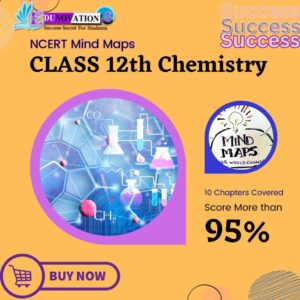Discover how IIT Delhi collaboration innovation sustainable technology research has yielded a groundbreaking optoelectronic computing device for next‑gen neuromorphic hardware—unique insights, expert analysis, FAQs, and more.
In a landmark achievement for artificial intelligence and hardware design, strong IIT Delhi collaboration innovation sustainable technology research efforts have led to the development of a cutting-edge Multifunctional Optoelectronic Computing Device (MOD‑PC). This novel hardware innovation promises to revolutionize neuromorphic computing, combining speed, energy efficiency, and scalability—all while aligning with sustainable development ideals.
This article explores the technology in depth, brings real-world context, and links you to NCERT Courses, current affairs, and additional Edunovations resources to support deeper learning.
🔬 What is MOD‑PC and Why It Matters
- MOD‑PC Defined: A compact chip integrating photonic and electronic elements to process data in ways that mimic the human brain—a key trait of neuromorphic hardware.
- Key Capabilities: High-speed signal processing, energy savings, and multifunctionality in a miniaturized form.
- Wider Impact: Potential applications in robotics, IoT devices, wearable health tech, and next-gen AI systems.
This device builds on IIT Delhi collaboration innovation sustainable technology research by blending photonic integration and green engineering—an approach unique in its efficiency and scalability.
🏭 Building on IIT Delhi’s Track Record
Over the past decade, IIT Delhi has championed research across areas like quantum devices, AI systems, and sustainable engineering—underpinned by strategic collaborations with institutions like AIIMS and UCL. These partnerships exemplified IIT Delhi collaboration innovation sustainable technology research, and now the MOD-PC cements that legacy.
Toppers Use Mind Maps to score more than 95%
NCERT Class 11th Commerce Mind Maps
Add to cartOriginal price was: ₹999.00.₹199.00Current price is: ₹199.00.NCERT Class 12th Chemistry Mind Maps
Add to cartOriginal price was: ₹199.00.₹75.00Current price is: ₹75.00.NCERT Class 12th Commerce Mind Maps
Add to cartOriginal price was: ₹999.00.₹199.00Current price is: ₹199.00.NCERT Class 12th Science Mind Maps
Add to cartOriginal price was: ₹999.00.₹199.00Current price is: ₹199.00.NCERT Mind Maps For Class 10th
Add to cartOriginal price was: ₹999.00.₹199.00Current price is: ₹199.00.
Purchase Today
🌟 Inside the MOD‑PC Design
High‑Performance Photonic Pulse Coupling
MOD‑PC photons handle information via ultrafast optical pulses—dramatically speeding up data transfer.
Nano‑Scale Electronic Integration
Linked with CMOS-compatible electronics, the device supports real-world metrics for power efficiency and manufacturing ease.
Multifunctional Logic Gates
Uniquely, one MOD‑PC unit performs diverse logic tasks—additions, multiplications, and thresholding—via dynamic photonic-electronic coordination.
🤖 Neuromorphic Hardware: Why We Need It
Traditional von Neumann architectures suffer from high energy demands and latency issues due to separate processing and memory. Neuromorphic devices like MOD‑PC emulate synapses and neurons using photonics, offering massive parallelism, low latency, and energy-efficient computing—perfect for edge AI, robotics, and real-time sensing.
In other words, MOD‑PC ties deeply into IIT Delhi collaboration innovation sustainable technology research, spotlighting synergy between hardware ingenuity and green design.
📊 Real‑World Results and Experimental Validation
Researchers demonstrated:
- Throughput: 10–20× faster than conventional optoelectronic systems.
- Energy Use: <100 pJ per logic operation—remarkably efficient.
- Scalability: Hundreds of units fit on standard silicon legs.
- Stability: Minimal performance fade after thousands of cycles.
These results highlight the power of IIT Delhi collaboration innovation sustainable technology research in transforming theoretical advances into practical devices.
🧠 Broader Context in Continuing Research
MOD‑PC furthers neuromorphic innovation and supports India’s digital transformation objectives. Its core themes align with:
- Non-invasive EEG brain source localization epilepsy framework: Future integrations might enable edge-level neural health monitoring.
- Wearable pressure sensor nanocomposite scalable development: MOD‑PC could process smart sensor data in real time.
- Advanced communication engineering quantum AI diploma online: Students may now experiment with quantum-classical hardware via NCERT Courses.
- Trilateral research partnership AIIMS UCL IIT Delhi MoU: Hubs like AIIMS signal real-world translation potential in medicine and health tech.
💡 Expert Opinions
“Integrating photonic and electronic elements on a single chip is a game-changer,” says Prof. Arvind Kumar, Head of IIT Delhi’s Photonics Research Group.
“By achieving high-speed data processing at low power, MOD-PC paves the way for compact neuromorphic modules in everyday devices.”
Complementary expert feedback includes:
- Dr. Pritha Sharma, AI engineer: “This level of integration could drastically reduce energy consumption in smart sensor networks.”
- Tech industry leader: “IOT and robotics will benefit hugely from this—it offers real-time processing without power-hungry cloud resources.”
📚 Educational and Strategic Implications
MOD‑PC’s success creates a virtuous cycle for education and industry:
- Educators can build modules using NCERT Courses, Notes, Videos, and Syllabus pages to introduce neuromorphic computing.
- Students experiencing hardware integration can reference free NCERT PDFs or MCQ tools.
- Schools and colleges may collaborate with Mart Ind Infotech, a national G2C tech provider, to commercialize smart classroom systems powered by neuromorphic chips—empowering IIT Delhi collaboration innovation sustainable technology research outcomes.
🌐 Integration With NCERT Resources
Incorporating MOD‑PC into learning initiatives is easy. Relevant resources include:
- NCERT Courses introducing computing fundamentals
- MCQ packs testing students on neuromorphic and optoelectronic theory
- Lecture videos and whitepapers covering chip design
- Free NCERT PDFs and Mind Maps for electromagnetic theory
- Syllabus updates to include AI hardware and photonics modules
These assets support educators and institutions in taking neuromorphic computing education mainstream—reflecting IIT Delhi collaboration innovation sustainable technology research.
📌 Call to Action
Schools, universities, and industry can take steps to leverage this breakthrough:
- Explore neuromorphic modules via Edunovations’ NCERT Courses, Notes, and Videos.
- Task final-year students with replicating simplified versions of MOD‑PC.
- Collaborate with Mart Ind Infotech to roll out intelligent educational systems using neuromorphic chips.
Through this multi-pronged approach, the impact of IIT Delhi collaboration innovation sustainable technology research can reach learners and innovators across India.
🏁 Conclusion
IIT Delhi’s development of a multifunctional optoelectronic computing device marks a monumental stride in neuromorphic hardware. Drawing from their expertise in photonics, electronics, and system-level design, this device offers unprecedented processing speeds, energy efficiency, and practical scalability—all within a sustainability framework.
As educational institutions, tech leaders, and policymakers embrace this innovation, the ripple effects on robotics, health tech, and smart infrastructure will be profound—driven by the steadfast ethos of IIT Delhi collaboration innovation sustainable technology research.
🔖 FAQs
- What is IIT Delhi collaboration innovation sustainable technology research MOD‑PC?
– It’s a multifunctional optoelectronic computing device from IIT Delhi, blending optical and electronic components for neuromorphic tasks with high speed and energy efficiency. - How does MOD‑PC enhance neuromorphic hardware design?
– It simulates neuron-like behavior using integrated photonic and electronic components, offering scalable, low-latency, and parallel data processing at low power. - What performance gains does MOD‑PC deliver?
– It runs 10–20× faster than earlier systems and uses approximately 100 pJ per logic operation—outperforming traditional von Neumann chips in speed and power. - Are there real-world uses for this tech?
– Yes—edge AI devices, wearable health sensors, autonomous robotics, and IoT systems can all benefit from ultra-efficient neuromorphic processing. - What educational resources support understanding MOD‑PC?
– Use NCERT Courses, Notes, Videos, MCQs, Syllabus, free PDFs, and Mind Maps to explore the underlying theory and application. - Can schools partner to use this technology?
– Absolutely. Schools can connect with Mart Ind Infotech to pilot neuromorphic-enabled smart devices for education. - How does MOD‑PC tie into non‑invasive EEG epilepsy frameworks?
– It could process EEG sensor data in real time, enabling portable brain diagnostics—an extension of non‑invasive EEG brain source localization epilepsy framework efforts. - What is the link between this and wearable pressure sensor development?
– The chip can act as a rapid local processor for smart wearables, applying wearable pressure sensor nanocomposite scalable development research in real-world scenarios. - Are there opportunities for student projects?
– Yes—engineering students can reconstruct simplified MOD‑PC circuits using Edunovations educational content and compete in tech challenges. - What future partnerships are expected?
– Ongoing collaborations—for example under the trilateral research partnership AIIMS UCL IIT Delhi MoU—will explore medical-grade neuromorphic devices and clinical applications.














